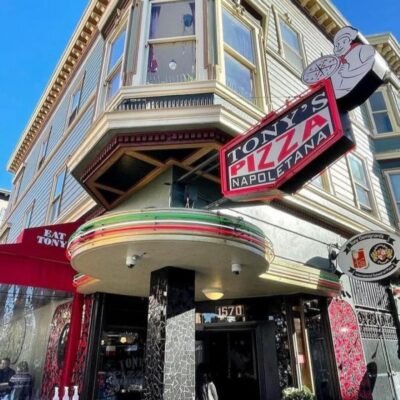In today’s fast-moving digital world, customers are no longer satisfied with just ads, slogans, and social media posts. They want more. They want to feel the brand. They want experiences.
This is where experiential marketing comes in—and it’s changing everything. From pop-up events and product demos to interactive online campaigns, brands are shifting their strategies to engage people emotionally and personally. That’s why experiential marketing is now dominating brand strategy in 2025.
What Is Experiential Marketing?
Experiential marketing (also called engagement marketing or live marketing) is a strategy where brands create real-life or digital experiences that let customers interact directly with the product or service. It’s all about creating memorable moments that build a deep connection between the brand and the consumer.
Instead of telling people what a product is, experiential marketing shows them—and more importantly, lets them feel it.
Examples:
- A chocolate brand setting up a live tasting station in malls
- A fitness company offering free trials through interactive mobile pop-ups
- A tech brand launching a virtual reality experience to explore a new product
These are not just ads. These are immersive experiences—and they’re working.
Why Is Experiential Marketing Becoming So Popular?
There are several reasons why experiential marketing is dominating modern brand strategies:
1. People Remember Experiences
Studies show that people remember 90% of what they do versus only 10% of what they hear or 20% of what they read. Experiences create stronger memories, which leads to higher brand recall.
2. Emotional Connection Drives Loyalty
Brands that create meaningful experiences build emotional relationships with their customers. This emotional bond makes people more likely to trust the brand and become repeat buyers.
3. Word-of-Mouth and Social Sharing
When people have a good experience, they talk about it. They share it on Instagram, YouTube, TikTok, and more. This free marketing spreads brand awareness quickly and widely.
4. Helps Brands Stand Out
In a world full of ads, an experience can cut through the noise. Unique events or interactive campaigns are more likely to capture attention and get remembered.
5. Supports New Product Launches
Experiential marketing is perfect for launching products. It helps customers try the product before buying, builds curiosity, and creates buzz around the release.
Real Brands Succeeding with Experiential Marketing
Let’s look at some famous companies using experiential marketing with great success:
1. Nike – House of Innovation Stores
Nike created multi-level retail stores where customers can customize shoes, test products, and even play on in-store sports courts. It’s shopping mixed with experience.
2. Coca-Cola – “Share a Coke” Campaign
By printing names on Coke bottles and encouraging customers to find their name, Coca-Cola turned buying a drink into a personal, shareable experience.
3. IKEA – Virtual Home Design Experience
IKEA introduced VR-based apps and in-store simulators where users could redesign their rooms virtually using IKEA furniture.
4. Airbnb – “Live There” Campaign
Airbnb allowed users to book real-life local experiences—like cooking classes or art tours—showcasing its platform as more than just accommodation.
5. Red Bull – Extreme Sports Events
Red Bull hosts skydiving, racing, and extreme sports events under its brand—aligning with its image as a brand for the bold and adventurous.
These brands understand one thing: people want more than a product—they want a feeling.

Types of Experiential Marketing Strategies
There are many ways to execute experiential marketing depending on your business and audience:
a) Pop-up Events
Short-term, high-impact events that offer live interaction with your brand.
b) Product Sampling
Letting people try your product, often paired with contests or feedback opportunities.
c) Virtual Experiences
Augmented Reality (AR), Virtual Reality (VR), or interactive apps that let users explore your brand digitally.
d) Brand Activations
Fun, interactive public stunts or creative setups in high-traffic areas.
e) Workshops & Demos
Teaching customers how to use your product—great for beauty, food, and fitness industries.
f) Interactive Installations
Art-based or tech-based installations where people can take photos, play games, or explore creatively.
Benefits of Experiential Marketing for Businesses
- Boosts customer engagement
- Increases brand loyalty and trust
- Generates social media buzz and free publicity
- Improves conversion rates through real interaction
- Gathers valuable customer feedback in real-time
Challenges of Experiential Marketing
Despite its power, experiential marketing comes with a few challenges:
1. Cost and Planning
Events or digital experiences require budget, staff, and good planning.
2. Scalability
It’s harder to scale than traditional ads—though digital experiences help.
3. Measuring ROI
Tracking the return on investment can be tricky, especially if the goal is emotional connection or brand awareness.
4. External Factors
Weather, health guidelines (like during COVID-19), or public response can affect the success of live events.
How to Get Started with Experiential Marketing
If you’re thinking of adding experiential marketing to your brand strategy, here’s how to begin:
- Know Your Audience – What do they enjoy? What problems can your product solve through an experience?
- Set Clear Goals – Are you launching a product, increasing awareness, or getting feedback?
- Start Small – Try a local event, a social media contest, or a product demo to test the waters.
- Use Technology – Explore QR codes, AR filters, or interactive displays to make things more engaging.
- Promote Your Experience – Use digital marketing to drive people to your event or campaign.
- Collect Feedback – Ask participants for thoughts and use that to improve your next campaign.
Final Thoughts
Experiential marketing is dominating brand strategy because it delivers something traditional marketing cannot—a real emotional connection. In 2025, where attention spans are short and competition is high, brands that create memorable, personal experiences will stand out and win.






